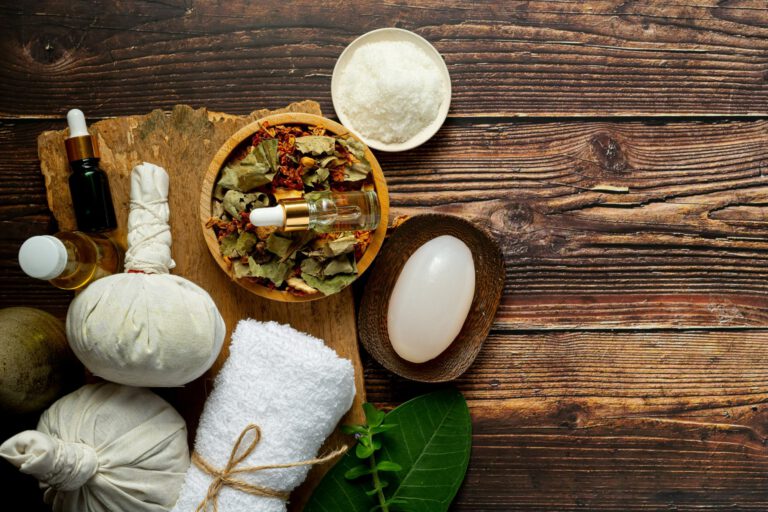Joint pain and arthritis are a daily obstacle for many people. Whether it’s stiff knees when standing up, sore hands, or aching back – such complaints limit the joy of life. Many are looking for ways to relieve the pain without the side effects of medication. This is where the millennia-old healing art of Ayurveda comes into play. With the Panchakarma Kur Deutschland offers a holistic approach to relieve joint pressure, reduce inflammation, and increase well-being.
Ayurveda: Health in Balance
Ayurveda means “science of life” and originates from India, where it was developed over 5,000 years ago. It is based on the assumption that health arises when body, mind, and spirit are in harmony. This harmony is regulated by the three doshas – Vata, Pitta, and Kapha. Each person has an individual dosha mix that shapes their physical constitution and personality. When this balance is disturbed, for example, due to stress, poor diet, or environmental toxins, problems such as arthritis can arise. Ayurveda in Deutschland is becoming increasingly popular because it offers a gentle, natural alternative that is individually tailored to each person.
What makes Panchakarma so special?
The Panchakarma treatment at our Ayurveda center in Germany is an intensive cleansing method that plays a central role in Ayurveda.
“Panchakarma” means “five actions” and encompasses five procedures that remove toxins – called “ama” in Ayurveda – from the body. Ama is caused by unhealthy habits, such as fast food, lack of sleep, or stress, and can build up in the joints, promoting inflammation and pain. Through cleansing, the balance of the doshas is restored, which is particularly helpful for chronic joint problems. In Germany, this method is offered in certified centers that combine traditional knowledge with modern comfort.
How does Panchakarma relieve joint pain?
In Ayurveda, joint pain and arthritis are often associated with excessive Vata dosha, which is aggravated by dryness, cold, or irregular routines. Ama in the joints leads to stiffness, swelling, and pain. An Ayurvedic treatment in Germany with Panchakarma directly addresses these causes:
• Cleansing: Procedures such as virechana (purging), basti (medicated enemas), or nasya (nasal treatments) remove ama from the body. This reduces inflammation and relieves pain.
• Regeneration: Warm oil massages (abhyanga), herbal steam baths (swedana), or special treatments such as janu basti (knee therapy with warm oil) promote blood circulation and loosen tense joints.
• Strengthening: Herbs such as turmeric or boswellia, as well as a diet tailored to the doshas, support tissue healing.
Imagine someone like Anna, a 55-year-old teacher who has been struggling with osteoarthritis in her knees for years. After a Panchakarma treatment, she feels more flexible and has less pain when walking. Such stories are not uncommon and demonstrate how profoundly effective this method is.
This is how a Panchakarma treatment works
A Panchakarma treatment takes place in a specialized Ayurvedic center, where experienced therapists lead the treatment. It is divided into three phases:
1. Preparation: The body is prepared with warm oil massages, herbal baths, and light, warm meals. These measures loosen ama so that it can be excreted more easily.
2. Cleansing: The five treatments are selected individually. Basti is often central to joint pain, as it calms vata and directly addresses the joints.
3. Aftercare: After the treatment, there are tips for diet, exercise, and lifestyle to maintain the effects. These include yoga exercises and herbal teas.
The treatment usually lasts 7 to 21 days, depending on the patient’s condition and needs. A detailed consultation with pulse diagnosis and discussion ensures that the treatment is a perfect fit.
Why Ayurveda in Germany?
More and more Germans are discovering Ayurveda in Germany because it offers a natural, effective alternative to conventional medicine without the strenuous journey to India. Authentic treatments are available not only in centers like Munich, Frankfurt, or Hamburg. Genuine traditional Ayurveda is more likely to be found in rural areas, such as Bad Bocklet in northern Bavaria, with experts trained in India. The combination of traditional knowledge and Western comfort makes Ayurveda Kur in Deutschland particularly attractive. Each treatment begins with an individual diagnosis to tailor the treatment to individual needs.
Tips for everyday life
In addition to a Panchakarma treatment, simple habits can support the joints:
• Diet: Warm, fresh foods such as vegetable soups or rice dishes with ghee are ideal. Ginger tea or turmeric in the kitchen helps reduce inflammation.
● Exercise: Gentle yoga poses, such as cat-cow poses or gentle stretches, keep joints supple. A walk in the park is also beneficial.
● Relaxation: Stress worsens Vata problems. A warm sesame oil bath or five minutes of breathing exercises in the evening can work wonders.
● Daily routine: A fixed routine with early morning wake-up, tongue cleaning, and a short self-massage with oil improves well-being.
What do experiences and studies say?
People who have undergone a Panchakarma treatment often report noticeable relief. One example is Peter, a 62-year-old office clerk who, after a treatment, was able to climb stairs again without pain. Studies, such as those published in the “Journal of Ayurveda and Integrative Medicine” (2020), show that Panchakarma reduces inflammation and improves mobility. The detoxifying effect helps eliminate toxins, which relieves pressure on the joints.
Conclusion
Through cleansing, regeneration, and a balanced lifestyle, it promotes health and mobility. Anyone wishing to strengthen their joints should contact a certified Ayurvedic center and schedule a consultation. The Panchakarma treatment could be the path to a lighter, pain-free life.


